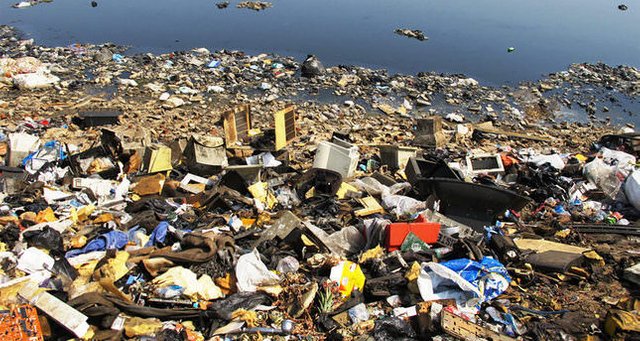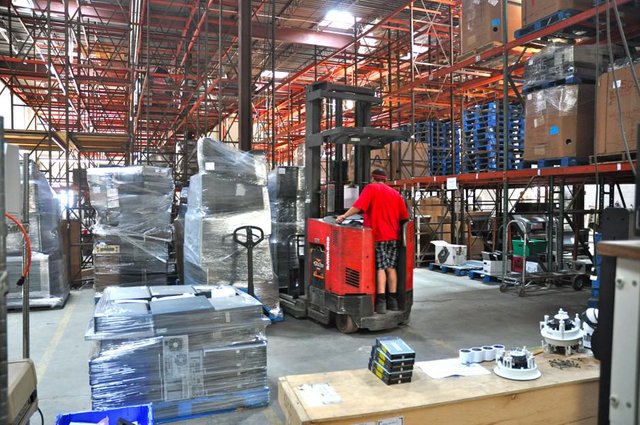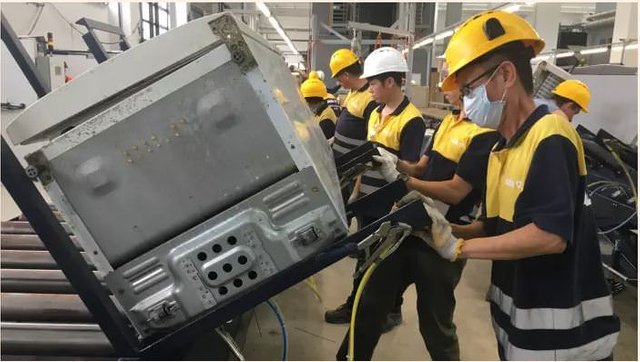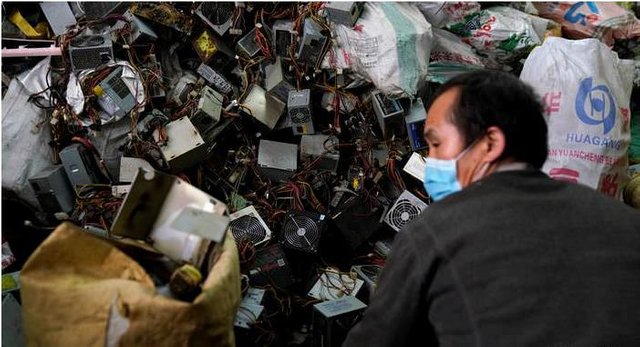The world is not paying much attention to electronic waste and it can prove death sentence for us!
Electronic waste means discarded electrical and electronic devices. Globally, we throw away 50 million tons of electronic waste every year. Due to our increasing demand to adopt new technology and the short lifetime of the electronic gadgets, it is increasing 3 – 5% every year.

According to United Nations report, only 20% of this waste is recycled properly. In 2016, around $65 billion of valuable metals were thrown away which is equal to gross domestic product of many developing countries. E-waste is dumped illegally in third world countries and children are under the constant threat of toxic chemicals. Most of the obsolete and broken technological devices are sent to black market and these are then shipped illegally to African countries.
Many large electronic products like computers, refrigerators and televisions are dumped in landfill sites. In countries like Cambodia and Ghana, where regulations are not strict and labour is cheap, the valuable materials are extracted by burning the waste and very toxic chemicals and metals are released which are harmful to environment and human health.
Ghana is center of world’s largest electronic waste dumping site. Agbogbloshie, which is fishing village has turned into massive dumping site. This has cause irreparable damages to fishing and environment in that region. Children spend whole day collecting metals to earn only 2 dollars per day.Electronic waste includes environmentally harmful chemicals like lead, phosphorus, mercury, cadmium and beryllium. When this waste is dumped in landfill sites, these chemicals seep into the ground and eventually into our water supply.
Device manufacturers must also play important role in the success of recycling. Apple, Samsung, Asus offer recycling programs which are documented in the manuals which come with the devices.
“The big problem the electronics industry is facing as a whole is products are getting lighter and lighter,” iFixit’s Kyle Wiens said. “This is great for consumers but a nightmare for recyclers.” Smaller, lighter products can be tricky to take apart, and yield a lower volume of raw materials."
It is good to know that world has recognized the need to recycle the electronic waste and make something useful out of it.
New York City has plan to make it zero waste city by 2030. In Brooklyn, e-waste is recycled by sorting it at drop-off center. Around one million pounds of e-waste is processed every year. Items are first broken down and useful parts are separated. Anything that can be recovered is repaired and sold out to reuse store in the facility. The e-waste is sent to another processing plant where it is further broken down into pieces.
Hong Kong has recently opened its first recycling facility for electronic waste. It is first government supported facility to dispose electronic waste which is damaging environment and human health. It will also help to minimize smuggling of electronic waste. Hong Kong is generating electronic waste at one of highest rate in Asia after USA and UK.
China was once the world’s largest hub which recycled electronic waste. Later it banned trash imports which has driven many recyclers out of business. But now Beijing is planning to invest in household waste treatment to deal with household trash problem. Guiyu in Southern China was one of the world’s largest electronic waste recycling site. It was banned because it was highly polluting the surrounding areas.So how is it useful? Gold is remarkable conductor of electricity and due to its ductility and tarnish resistance, it is often used to make component pins and connectors. Silver and palladium are often found in transistors, are used to make components like motherboard. Connecting all these parts make up the bundles of copper wire which can be reused.
Does it really add up value? A lot of tiny parts make the big dollars. Let’s consider this measure. The US spends annually 21 billion dollars in precious metals to manufacture electronics. It also recycles approximately 4.4 billion tons of expired and reused electronics every year. It means there is great potential in collecting these valuable materials.
For every one million cell phones recycled, 33 pounds of palladium, 75 pounds of gold, 772 pounds of silver and 35,274 pounds of copper is recovered. If we elevate this practice to global level, even big figures can be revealed.
So are we doing anything?

Recycling is done at impressive rate of 80% in places like San Francisco while the national average is only 34%.
As technology become more advanced, it is equally important that we understand to dispose of things which we are creating.




that's a waste, think that all these products had a price of thousands of dollars .
Great article; resteemed!
good post I like do not forget like koment votes post me thanks @teukuyusril
wow used goods can be used tu, many of its usefulness
great information .. thanks for sharing . keep it up :)@munawar1235
This post has received a 0.06 % upvote from @drotto thanks to: @banjo.
How many interesting things have been thrown out, with these electronic boards and parts, something can be collected that is interesting and necessary, some people buy it. Thank you for the post I like your topic of conversation.
Great post.. Keep creating the awareness
E-waste is going to be one of the serious problem for our new generations. If we will not reduce e-waste we would give a pollluted and dirty earth to our children. Thanks for raising such a genuine issue.
@reveur ven @steem-untalented @gentlebot @teamsteam